#horsebox
Text

2 notes
·
View notes
Text
My Heart Is A Horsebox - Chapter 4 - Rothery - The Worst Witch (TV 2017) [Archive of Our Own]
https://archiveofourown.org/works/58306852/chapters/149490496
Pippa wiped her cheeks with her other hand, running a finger under her eyes to fix her mascara. “Sorry. It’s not really a good look for a first date, is it?”
Sorry for spamming the tags with this drivel!
#hicsqueak#first date#chapter 4#horsebox#in which hecate has a mild panic#idiots in love#the worst witch#hecate hardbroom#pippa pentangle
1 note
·
View note
Text
The Advantages of a 3.5 Tonne Horsebox
For those seeking a luxurious and efficient way to transport their horses without breaking the bank, look no further than a 3.5 tonne horsebox. This compact solution offers a surprising amount of space and comfort, making it ideal for short journeys or competition days.
A key benefit of the 3.5t horsebox is its ease of use. Unlike larger models, you can drive a 3.5 tonne horsebox with a standard driving licence. This eliminates the need for additional training and qualifications, making it a more accessible option for a wider range of horse owners. Manoeuvring is another advantage. The 3.5 tonne horsebox's smaller size makes it perfect for navigating narrow country lanes and tight parking spaces.
On the topic of comfort, the Raceline 3.5 tonne horsebox is designed with both horse and rider in mind. The standard features include two stalls, a spacious groom's area, and a fully insulated composite roof for temperature regulation. Optional extras like a water tank and portable toilet ensure a stress free journey for everyone involved.
Customisation is key. That's why there are a wide range of optional extras to tailor your 3.5 tonne horsebox to your specific needs. Add features like a fold down bed, a wardrobe, or even a built-in sink and hob for preparing hot meals on the go.
Safety is paramount, and the 3.5t horseboxes are built to the highest standards. Features like a reinforced front bulkhead, a low-wide ramp with secure grip, and a camera system with both horse and reversing views ensure a safe and comfortable journey for your equine companions.
To find out more about any of our horseboxes, get in touch with a member of our team at Cooke Coachbuilders today on +44 (0) 1270 588598.

#horseboxes#horses#horse#showjumping#horseriding#horseback riding#horse riding#horsebox#horse transportation#horses of tumblr
1 note
·
View note
Link
horse float manufacturers india , camping trailer manufacturers in india
0 notes
Text

0 notes
Text
love that libreoffice is giving me new nicknames for all the characters via autocorrect
#malformity...malory...zamboni....nigel....#mahjong became mcmahon#yes even as mcmahon-master#wingardium leviosa = wingding levitation#gRYFFINDOR IS LADYFINGERS????#amortentia is now amortization. which is something about finance#grunewald...#hermite for hermione and horseboxes for horcruxes and orchestral for thestrals#brilliant#hedwig is now dwight#avada kedavra...kendra?
1 note
·
View note
Text

Hit the Road in Style: The Dream 4-Horse Trailer for Equestrian Adventures!
Dive into the world of equestrian adventures with the ultimate 4-horse trailer! Whether you're hitting the road for competitions or exploring new trails, this trailer offers unmatched comfort and style for you and your equine companions. It's more than a journey; it's about creating unforgettable memories with your team.
#chevallibertetrailers#chevalliberte#chevalLiberté#chevalliberty#chevaltrailers#chevalhorsetrailers#chevalhorseboxes#horseboxes#horsetrailers#multihorsetrailers#maxi2#maxi3#maxi4#herringbonehorsetrailers#touringcountry#touringone#hippomobile#trailerwithtackroom#trailerwithtacklocker#horsetrailerwithtackroom#horseboxforsale#singlehorsetrailers#4horsetrailer#3horsetrailer#doublehorsetrailer#twinhorsetrailer#2horsetrailer#towingahorsetrailer#besthorsetraileruk#trailersforhorses
1 note
·
View note
Text










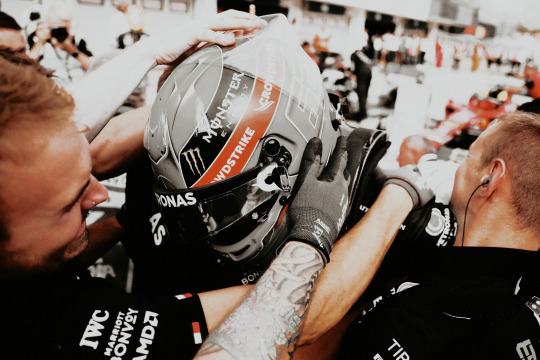





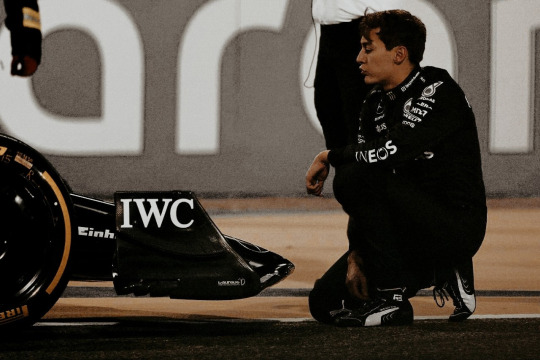






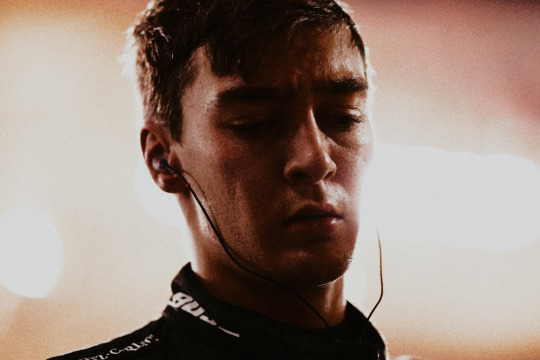












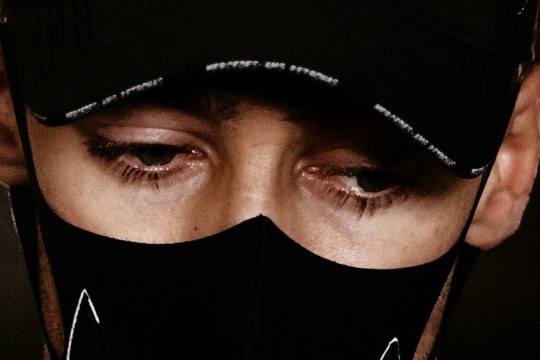













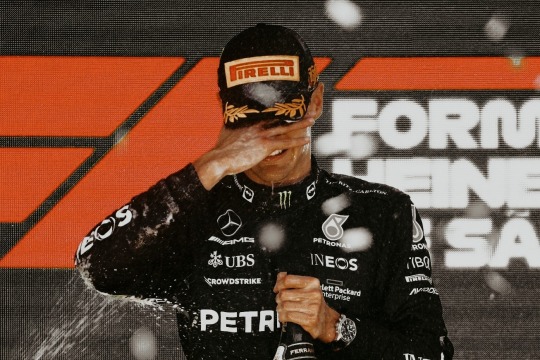







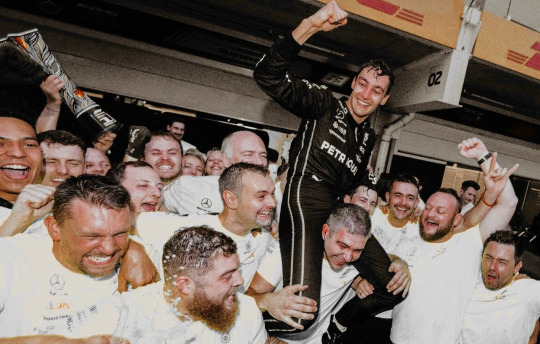

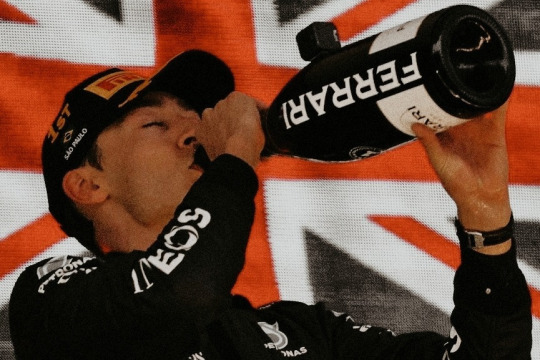


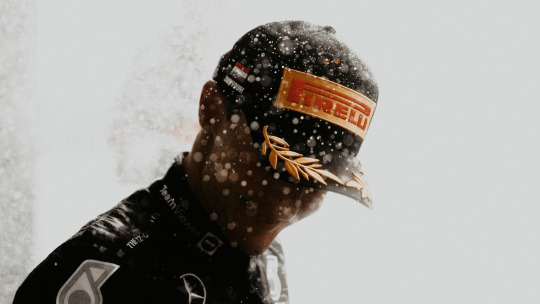


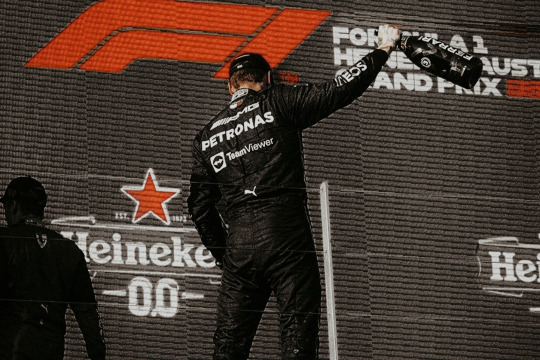
HIGHS and LOWS
sources below the cut:
George Russell - Britain’s next F1 champion? (podcast with Natalie Pinkham) // Orion by Frank Ocean // Sun King by The Beatles // --- // Toto after the 2020 Sakhir GP // --- // Toto after George’s first pole // --- // --- // --- // Grace Willows, To Kiss a King // --- // GQ: F1's Mr Consistent is focusing on all the positives // same GQ article // Thinking, 1938, Oil on Canvas by Hans Frohne // same GQ article // Ovid // High Performance Podcast // --- // The Diaries of Franz Kafka, 1910-1913 // Gone Ridin’ by Chris Isaak // Elena Ferrante, The Story of a New Name // IG post after Imola 2021 // --- // IG post after Imola 2020 // William Shakespeare, Henry VIII // High Performance Podcast x2 // No Stop Signs by Myllo // about The Fallen Angel by Alexandre Cabanel // Dante Alighieri // Square Mile: F1 driver George Russell: "I'm ready to fight." // --- // --- // Fade by The Driver Era // Crofty on the broadcast :) // Vince Lombardi // --- // --- // Heaven by The Neighbourhood // Square Mile article again // Shakespeare, King John // Friedrich von Schiller, The Artists // --- // Felipe Massa after the Sprint race in Brazil // The Times: The Formula One driver and his father, Steve, on failed driving tests and sleeping in horseboxes // ---
269 notes
·
View notes
Text
The Vicarstown Car Ferry

Above: This is not the Vicarstown car ferry train. I just needed a screenshot of a car on a train, and this was the closest I had to hand.
Every year, the Island of Sodor receives thousands of visitors from the Mainland, and obviously, the vast majority come by rail. A significant number, however, choose to arrive by car. Nowadays, this is no trouble, as they can simply drive across the Jubilee Bridge, which carries the main A950 road over the Walney Channel.
The bridge only opened in 1977, though, and any motorists arriving before then had to rely on the NWR's services to get themselves and their cars on and off of Sodor. And thereby hangs a fascinating tale about a little-known aspect of the NWR's history.
EARLY NWR EFFORTS
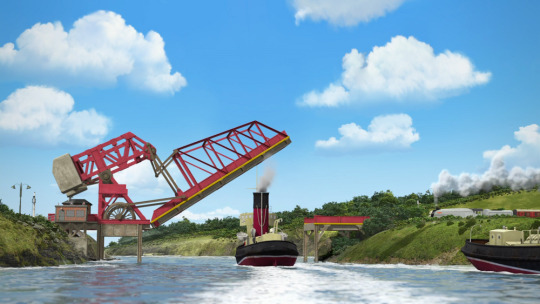
Above: The Vicarstown Bridge, in an undated view (obviously post-1975, given the presence of Spencer).
It all started with the construction of the NWR's own bridge over the Channel in 1915. In those days, there was no other link between Sodor and the Mainland, and thus no other way for goods and passengers to arrive. Some of those passengers wanted to bring their own horse-drawn carriages with them, and so was born one of the earliest vehicle-and-owner trains to run on Sodor.
To begin with, it was simply a case of strapping the vehicle to a special carriage truck, and coupling it up to whatever passenger train its owner was travelling in. The truck then travelled as far as the nearest station to wherever the owner was going, where it was detached and the vehicle rolled off.

Above: For a time, the NWR also offered the use of a horsebox in conjunction with a carriage truck, so that the carriage’s owner could take his own horse with him, and avoid having to search for one at the other end of his journey. This cost extra, though, so there were few takers.
THE VICARSTOWN CAR FERRY
With the boom of private motoring in the early-1920s, there came a similar explosion in demand for the carriage of road vehicles by rail. This in turn resulted in the NWR running its first dedicated car-carrying trains - albeit only on an as-and-when basis, and with cars and drivers travelling in separate trains. The NWR did not return to vehicle-and-owner trains until 1927, when it launched a regular car ferry service between Vicarstown and Barrow-in-Furness - probably the best-known of all its car-carrying trains.
This new service had been made possible by the 1925 LMS Agreement, which gave the NWR running powers into Barrow, and in turn required Vicarstown to be converted for through running. Among the changes which resulted was the conversion of the adjoining goods depot to handle parcels and mail (goods facilities moving to a new depot elsewhere), and the closure of the existing parcels platform. This platform was thus free for conversion into a loading dock for the new car ferry service.
OPERATIONS
Throughout the fifty years the car ferry service ran, the basic pattern of its operation remained much the same, with only details like the motive power, rolling stock and timings seeing much change. It is thus worth looking at a typical journey for the service, starting at Vicarstown and ending at Barrow.
Below: A vague representation of how the loading process would have looked. I've employed a bit of artistic license with this photo: while the NWR did have some enclosed double-decker car carriers, these were never used on the car ferry services.

To begin with, the consist for that particular crossing was shunted into the station - the carriage trucks going to the loading dock, and the passenger coaches to one of the through platforms. Drivers and passengers boarded their coaches, leaving their cars to be loaded by the station staff. Once loading was completed, the carriage trucks were marshalled and coupled to the coaches. All shunting was done by the train engine, who then ran round to the front and hauled the train to Barrow. On arrival, the whole train was shunted to the loading dock there, where passengers and cars were unloaded together. The stock was then taken away for servicing.
Of course, it goes without saying that in the opposite direction, the whole procedure was repeated, only in reverse.
In all, ten car ferry trains ran daily (five in each direction), with provisions in the working timetable for an extra four (two in each direction) if they were needed - say, during the busier summer months. To avoid overcrowding, a maximum of 20 cars were allowed on each crossing, and motorists had to book in advance. This enabled staff to work out how many carriage trucks were required, and what types, well ahead of time. It also allowed them to work out how many passenger coaches were needed - the rule here was that there should be at least one compartment for every car carried.
In the early 1930s, the NWR began allowing larger commercial vehicles to make use of the car ferry trains, and this required a slight amendment to the 20 cars rule. This amendment counted the size of a vehicle in car lengths - if, for example, a lorry turned up which was as long as three cars, then it took up three slots on that particular crossing. Any number of vehicles could thus travel on a single train, so long as their total length did not exceed 20 car lengths.
STOCK
The car ferry trains never had a specific engine allocated to run them - generally, any engine could do the job if they happened to be at Vicarstown or Barrow at the right time. As the NWR’s locomotive roster expanded, the car ferry became the exclusive preserve of the engines based at either of those sheds - the job generally being allocated to any engine who wasn't busy anywhere else that day.
The car ferry was also a neat way of getting an engine from one station to the other, without having to find an extra path for a light engine movement. For similar reasons, it was not uncommon for visiting LMS (later BR) engines to take charge of a Barrow-bound car ferry on their way home.
Below: An example of a long-wheelbase covered carriage truck. Many were later converted for parcels, newspapers or general goods traffic. This particular example went into departmental service, and in this view is carrying engine parts.

As far as rolling stock was concerned, this mainly consisted of both open and covered carriage trucks (henceforth referred to as OCTs and CCTs respectively). When the service first started, cars were carried on short-wheelbase OCTs, but these proved unpopular with motorists, as the cars often had their paintwork spoiled by smoke and soot spewing from passing engines - and sometimes from the engine pulling the train! The NWR tried to remedy this by offering the use of protective tarpaulins, but eventually they decided it would be more prudent to switch to CCTs instead.
Single cars were carried in short-wheelbase vans, similar in design to the GWR’s Mogo vans.
For pairs of cars, longer wheelbase CCTs could be used.
For trios or quartets, bogie CCTs were employed.
When larger commercial vehicles began to be carried, bogie OCTs were used - converted from the underframes of the fabled Dublin Stock.
Because of the aforementioned one compartment for every vehicle rule, the passenger coaches were at first quite a motley collection, with the numbers being made up by any old stock just lying around. It was only from the 1930s onwards that more consistent rakes of coaches began to be used - starting with Ironclad-pattern stock, moving on to Maunsell-pattern just after the War, and finishing up with Bulleid-pattern in the BR era.
MOTORAIL
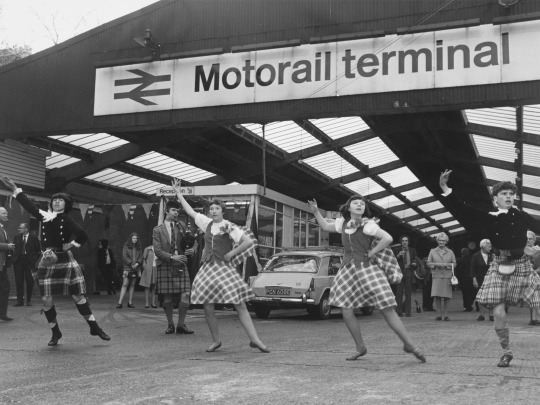
Above: A display of Scottish country dancing at...I think it's Kensington Olympia? No, I don't know why either.
In the 1960s, British Rail officially launched its Motorail service, offering fast travel for passengers and their cars to all parts of the country. To serve Sodor, one of the new services ran twice daily between Kensington Olympia and Vicarstown, and the latter’s existing loading dock was upgraded into a terminal. Two of the car ferry's ten daily crossings clashed with the proposed timings of the new Motorail services, and so were slashed from the timetable. Other than that, the car ferry was able to carry on as normal.
By then, the rolling stock used for the car ferry was beginning to show its age, and a programme of gradual replacement was implemented from about 1966 onwards:
For cars, General Utility Vans replaced the old bogie CCTs, which were retained for parcels traffic.
For commercial vehicles, Carflats replaced the OCTs, which were either scrapped or placed into departmental service.
Finally, for passengers, some of the NWR’s own allocation of BR Mk1s replaced the Bulleid-pattern stock.
The car ferry trains continued unabated into the 1970s, but it was clear they were running on borrowed time - for the first time, demand was beginning to outstrip capacity, and there was no room in the timetable to run extra trains. Then, exactly fifty years after the car ferries had first began, came a blow from which they were never to recover.
THE JUBILEE BRIDGE
That year saw the opening of the Walney Road Bridge, to mark the Silver Jubilee of Queen Elizabeth II. Needless to say, this snuffed out the NWR's car ferry monopoly in an instant. Nobody was more incensed at this development than Sir Topham Hatt, and he saw to it that the NWR was substantially compensated for the extinguishment of their ferry rights.

Above: The Jubilee Bridge. Visitors to Barrow (and native Barrovians, too) may think that this is the only bridge here. This is an illusion!
All was not totally lost, however, for 1977 also saw the extension of BR's existing London-Vicarstown Motorail service to a brand new terminal at Killdane - a more convenient base for the visiting motorist to explore Sodor. Such was the success of this new service that further others were introduced, linking Sodor with other provincial centres. Some of these services employed the stock which had previously worked the car ferry trains.
MODERN DAY MOTORAIL
The expansion of Sodor's Motorail services came during a period of gradual decline for the brand across the rest of BR. The expansion of Britain's motorways, the improvement of car technology, and the chaos of privatisation all ultimately conspired to kill off Motorail by the early-1990s.
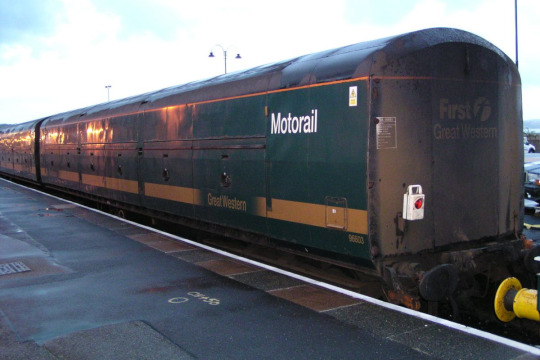
Above: First Great Western briefly revived the Motorail concept in the early-2000s, using a fleet of converted GUVs.
Despite this, Motorail on Sodor has continued to flourish into the present day. Not only are its existing terminals at Vicarstown and Killdane still in operation, but there is now a third terminal at Tidmouth. These form the basis for the NWR's current Motorail services, which all serve to help solve a very basic problem.
The thing is, many visitors to Sodor now arrive in their own cars, but the island's road transport infrastructure isn't really suited to the needs of the long-distance motorist. Fortunately, the NWR has them covered. Special car-carrying trains now run regularly between the Motorail terminals at Vicarstown, Killdane and Tidmouth. While you still have to book in advance, it's a small price to pay for having the convenience of a car at your disposal, without the insanity that comes from having to drive it all the way across Sodor.
Of course, while the NWR's Motorail trains are available to all motorists (local and foreign) the majority of their customers are Mainlanders - the typical Sudrian would just as soon leave his car at home altogether!
#thomas the tank engine#the railway series#sodor#island of sodor#ttte headcanon#ttte analysis#north western railway#vicarstown#vicarstown bridge#barrow in furness#car ferry
50 notes
·
View notes
Text





The Adventures of Dark Lord Mortadella as he battles Headmaster Bumbledom and former Dark Lord Waldringfield. Aided by the macromolecular, Headmaster Bumbledom seeks to destroy Lord Mortadella’s horseboxes.
————
Because spell check thought these were correct for some reason, and I had to share them.
13 notes
·
View notes
Text
Chapter 5
“Something distracting you?” Pippa asked with a twinkle in her eye.
Hecate took a breath. “Perhaps. But it would be vain of you to think it had anything to do with you,” she joked back, half-heartedly, fumbling with the keys as she turned the ignition back on and manoeuvred the car into a different space – knowing it wouldn’t hurt to walk those few extra steps.
Pippa scrunched up her nose and got out of the car. “Vain? A little, yes,” she laughed over the hood, “But it’s not against any sort of code now, is it?”
More drivel....
#hecate hardbroom#hicsqueak#pippa pentangle#the worst witch#fanfiction#drowning the tags with my drivel#sorry guys#for those reading the rating has gone up - chapter 10 will contain smut#but I've written it so it can be avoided without inpacting the story - just an added bonus
5 notes
·
View notes
Text

wild_saunas
The absolutely stunning river Spey (post sauna in the @inshriach horsebox conversion)
12 notes
·
View notes
Photo










horse floats manufacturers in India .horse float manufactured by Bullston trailers India. WWW.BULLSTON.COM
0 notes
Text
i had such an amazing birthday party!!! we went swimming at the seal hotspot and three of them came right up to about 10 metres away ♥️ and then late at night this HUGE lightning storm rolled in and we sat in the horsebox with the side down and watched it. craziest shit i’ve ever seen honestly
12 notes
·
View notes
Text

The 4 Horse Trailers Every Equestrian Dreams About
Embark on your next adventure with the best in equine transportation. From luxurious living quarters for you and your horses to innovative safety features that keep them secure, these top 4 horse trailers are a game-changer for equestrians everywhere. Dive into the details and find your perfect match
#chevallibertetrailers#chevalliberte#chevalLiberté#chevalliberty#chevaltrailers#chevalhorsetrailers#chevalhorseboxes#horseboxes#horsetrailers#multihorsetrailers#maxi2#maxi3#maxi4#herringbonehorsetrailers#touringcountry#touringone#hippomobile#trailerwithtackroom#trailerwithtacklocker#horsetrailerwithtackroom#horseboxforsale#singlehorsetrailers#4horsetrailer#3horsetrailer#doublehorsetrailer#twinhorsetrailer#2horsetrailer#towingahorsetrailer#besthorsetraileruk#trailersforhorses
1 note
·
View note
Text
THE TIMES: The Formula One driver and his father, Steve, on failed driving tests and sleeping in horseboxes

George
My earliest memories are of living in a mobile home while my parents built a house in a field in the middle of nowhere, near Wisbech in Cambridgeshire. I rode a pedal tractor around the site, hurtling through corners and reversing with a trailer.
At 25 I am the youngest of three. Cara is 37 and works as my personal assistant. Benjy is 36 and caught the karting bug when he was just 11. He was a brilliant driver, becoming a national and world karting champion. Unfortunately, even starting at such a young age, it was already too late for him to have a professional career. I took up karting when I was six and he helped me a lot. Benjy was like a mentor. He eventually gave up racing at university, so Dad’s focus was on me.
I didn’t see much of Dad during the week. He got up early and came home late running a business selling seeds and pulses. As a kid you miss having your father around, but it’s only now that I appreciate he was doing it so I could race at the weekend. Dad didn’t come from a lot and did well to create a successful business. We weren’t poor but we weren’t wealthy like the families of some F1 racing drivers now.
After long hours at work Dad drove us in a camper van to racetracks around the country. It was very much a family affair. Dad was the mechanic, Mum did the cooking and collected data on my driving. When I drove well, there were celebrations and the mood was great but because everyone was so emotionally and financially invested, when I suffered a poor weekend the mood was bad.
Dad has always been hard on the ones he loves. As a young kid, that was difficult to deal with. The pressure didn’t just filter down to me, it affected the whole family. I felt the weight of failure and expectation. If I made a silly mistake and spun off the track, I can now understand why Dad might have thought, “What the hell am I doing this for?” He had to work his arse off to support my racing, so if I didn’t put in enough effort, it must have been hard.

I now live in the world of F1, where tens of millions of pounds are spoken about like peanuts. Even in Formula Two or Three, every driver has to find huge amounts of money to get on the grid — it’s just crazy. When I was 16 and moving up through the ranks, I realised Dad didn’t have that sort of capital. I thought, “Oh shit, if I can’t find that sort of sponsorship or get picked by a team, my F1 dream is gone.”
Winning the F2 championship in 2018 was a big moment but I’ll never forget the day I signed for Williams F1 in September 2018. I was racing in F2 in Sochi, Russia, when Claire Williams, the deputy team principal at the time, called me in and offered a deal. Mum and Dad were the first people I told and they both cried. I told them to save their tears for when I won a race.
I joined Mercedes for the 2022 season, alongside Lewis Hamilton. It was a huge opportunity for me to learn and grow in F1, as well as show what I’m capable of. It was not an easy season for Mercedes but I feel very fortunate to be in this position, plus Lewis is such an incredible bloke on and off the track. He is so experienced, whereas I’m a 25-year-old who is just totally focused on trying to be the best F1 driver I can be. I’m pretty inspired by what he has achieved.
Dad is a strong character but he has become more emotional since his children have left home. He’s also friendlier now and doesn’t mind making a fool of himself from time to time. My only regret is that F1 doesn’t leave much free space to see each other but we do speak on the phone all the time.
Of course he still watches the pennies and will only fly economy — he won’t let me pay for their flights either. I know my parents can afford to fly business but it’s the principle for them. I want to make sure I reach a position with my racing where I can afford to give them the best in their retirement. They totally deserve it.

Steve
The F1 guys are OK on the racetrack but they are never as good as their dads on normal roads. George is always telling me to slow down as we approach a junction, though his mum thinks it’s fantastic when he takes her out and drives quickly.
There was just one occasion when George didn’t put the full effort in and it caused quite a commotion. He failed his first driving test at 17 because he thought that being a great driver on the track was good enough. He came home fuming that the examiner was wrong. We had to go back to the test centre in King’s Lynn so George could confront him. That didn’t go down well.
George was a cheeky little boy, a bit of a comedian. I worked a lot but it’s strange that I can only remember the racing side of his life, not watching him grow up at home. We enjoyed a nice life but had to work hard for it. I came from a family of farm workers with very little money and wanted to get away from agriculture and better myself but I ended up owning a wholesale seed business.
My wife, Alison, and I knew George was going to be a racing driver at the age of two. He was born on the track, coming to races to watch his brother and help out in the garage. He had a toy tractor that he rode around the pit lane and collected stickers from each race to stick on his “George Russell Racing” tractor.
As George progressed through the racing ranks it became more and more expensive. We invested in a motorhome to travel to races — before that I would sometimes sleep in a freezing horsebox. There were sacrifices. Alison and I didn’t go on our first holiday together until two years ago, on a trip to Lanzarote. By then we had been together for 38 years. People think that now George is in F1 we hang out with Lewis Hamilton and Toto Wolff, the Mercedes principal, every weekend in the sunshine, but it couldn’t be further from the truth. Now Alison and I rarely go to races because we don’t want to interfere.
It was hard letting George fly the nest because we had been a close family, always doing our racing together. He is methodical and organised but his feet are firmly on the ground. There are plenty of people in the family to put him straight if needed.
There’s no magic wand to become an F1 driver — it takes hard work and dedication. It was only when I stood on the track with George before his first grand prix that I looked up at the enormous crowd and thought, “Oh my God, we’ve actually got here.”
302 notes
·
View notes